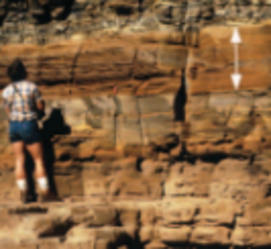Distal Impact Ejecta Layers: Spherules and More
During the formation of large impact structures, layers of melted and crushed rock (ejecta) are deposited over large areas of the Earth’s surface. Ejecta thrown farther than 2.5 crater diameters are called distal ejecta. At distances greater than ~10 crater diameters, the distal ejecta layers consist primarily of millimeter-scale glassy bodies (impact spherules) that form from melt and vapor-condensate droplets. At least 28 distal ejecta layers have been identified. Distal ejecta layers can be used to place constraints on cratering models, help fill gaps in the cratering record, and provide direct correlation between impacts and other terrestrial events.
Distal Impact Ejecta Layers: Spherules and More Read More »


